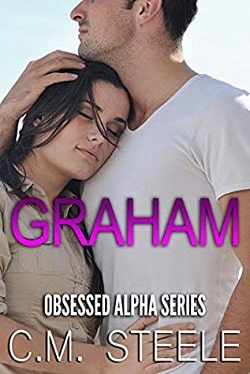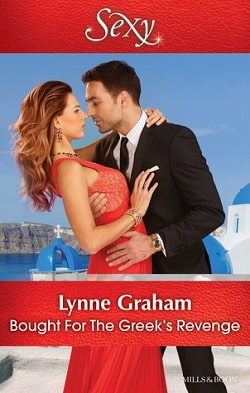A detective walked up to Washington’s office.
“Sorry to interrupt, Lieutenant.”
“No interruption. Sergeant Payne here was just leaving. What is it?”
“Just got word of a shooting at the Reading Terminal Market. At least two dead.”
“What the hell is going on with today?” Washington said disgustedly.
First Deputy Commissioner Dennis V. Coughlin was leaning back in his high-back leather chair, feet on the desk, and in deep thought, when Captain Francis X. Hollaran stuck his head in the half-open doorway.
“Chief, Matt’s here. And more info is coming in on the market shooting.”
Coughlin nodded, then slid his feet off the desk and onto the floor.
“Thanks, Frank. Give it to me when it’s solid. And send him on in, please.”
The door opened more and Payne came through it.
“Matty!” Coughlin said, his tone genuinely pleased.
Coughlin stood and came around the desk. He affectionately put his arms around Payne and patted him on the back as Payne returned the gesture.
“Have a seat, Matty,” he said, pointing to one of the pair of upholstered armchairs.
As Payne did, he watched Coughlin go back to his leather chair. Coughlin wasn’t wearing the double-breasted jacket of his suit, and Payne noticed that he also wasn’t wearing his Smith amp; Wesson snub-nosed.38 Special revolver. Nor did he have the well-worn holster threaded on his belt on the right side.
Coughlin had slipped the five-shot revolver, butt forward, into that same holster every morning for thirty-seven years, since the day he reported on the job as a rookie detective. Payne knew that it was the same standard sidearm that Philadelphia Police Department cops had carried for damn near forever, including his father and his uncle when they were killed.
Then Payne saw, sitting on top of a copy of The Peace Officer, the official publication of the Fraternal Order of Police Lodge #5, a new black molded plastic clamshell box. It had the logotype GLOCK-the big G circling the smaller LOCK-molded into its top and bottom.
“That’s not a new pistol, is it, Uncle Denny?”
Coughlin looked at it with a sour face.
“Yours?” Payne pursued.
“Mariani insisted.”
Payne raised his eyebrows at the mention of the police commissioner.
“Since the department now is issuing the Glock 17,” Coughlin went on in explanation, “he said that I needed to set an example.”
Payne nodded, then said, “Why not one of the other Glocks, the optional models?”
Police Commissioner Mariani had lobbied-and, remarkably, won the battle-for the city to allow the police to carry more firepower. The Philadelphia Police Department issued to every officer on the force a Glock Model 17-at no cost, after they of course had qualified with the weapon at the department gun range. The 17 was a semiautomatic pistol chambered for the nine-millimeter round. It could hold eighteen rounds, one in the throat and seventeen in the magazine.
The commissioner, even more remarkably, had also lobbied for and, beyond belief, gotten approval for four Alternative Service Weapons. These were also Glock models, two of the models chambered in.40-caliber and two in.45-caliber.
It had been remarkable because there were those of the mind-set-said mind-set more often than not being of one’s head being deeply stuck in the sand, or firmly up one’s ass-that it was a danger to the very public they were sworn to protect for the police to carry such powerful weapons.
All sorts of wild-eyed hysteria surfaced during the debates as to just how powerful a firearm a police officer should have. There had even been a troop of protesters who-perhaps coincidentally, perhaps not-looked like they might rob a bank at any moment. They had marched on City Hall carrying posters bearing a red circle with a diagonal bar across photos of Clint Eastwood as “Dirty Harry,” the movie character cop who’d terrorized the sensibilities of San Franciscans.
But in the streets of Philly, as more and more gun battles with bad guys-and gun battles between the bad guys themselves-showed that damn near none of the thugs carried a.38-caliber or similar-size weapon, cooler heads successfully argued that the cops were being outgunned.
For a Philly cop to carry one of the larger-caliber pistols as his duty weapon, there were rules, of course. Chief among them: The officer had to buy the larger-caliber gun with personal funds. The department would issue only the Model 17 at no cost. Second, the alternative weapon had to be inspected. Which meant undergoing a mandatory inspection by a department armorist at the police department firing range.
Then there was the actual qualification test. If the officer successfully completed this, she or he was given a certification card that had to be carried on their person at all times. There was also the rule that the pistols could be loaded only with department-issued ammunition-165-grain tactical rounds in.40-caliber and 230-grain tactical rounds in.45-caliber. That ammo had to be used exclusively, whether the officer was on duty or off duty. Finally, upon meeting all the requirements to carry one of the larger-bore Glocks, the officer had to give the department-issued Model 17 back to the depar















